In this guide we'll show you what objects in deep-space in the Universe actually look like when observed through a telescope.
There’s a key moment in stargazing, after you’ve set up your kit and honed in on a target, when you first lean in to the eyepiece to take in the view.
For experienced observers this can be the point where you set eyes on an old celestial friend, but for beginners it can be a challenge to expectations.
Often the glittery renditions of astronomical objects viewed online and in print meet the reality of a view through an actual telescope.
For more advice, read our guide to telescope stats, our best beginners' telescopes or how to choose your first telescope.
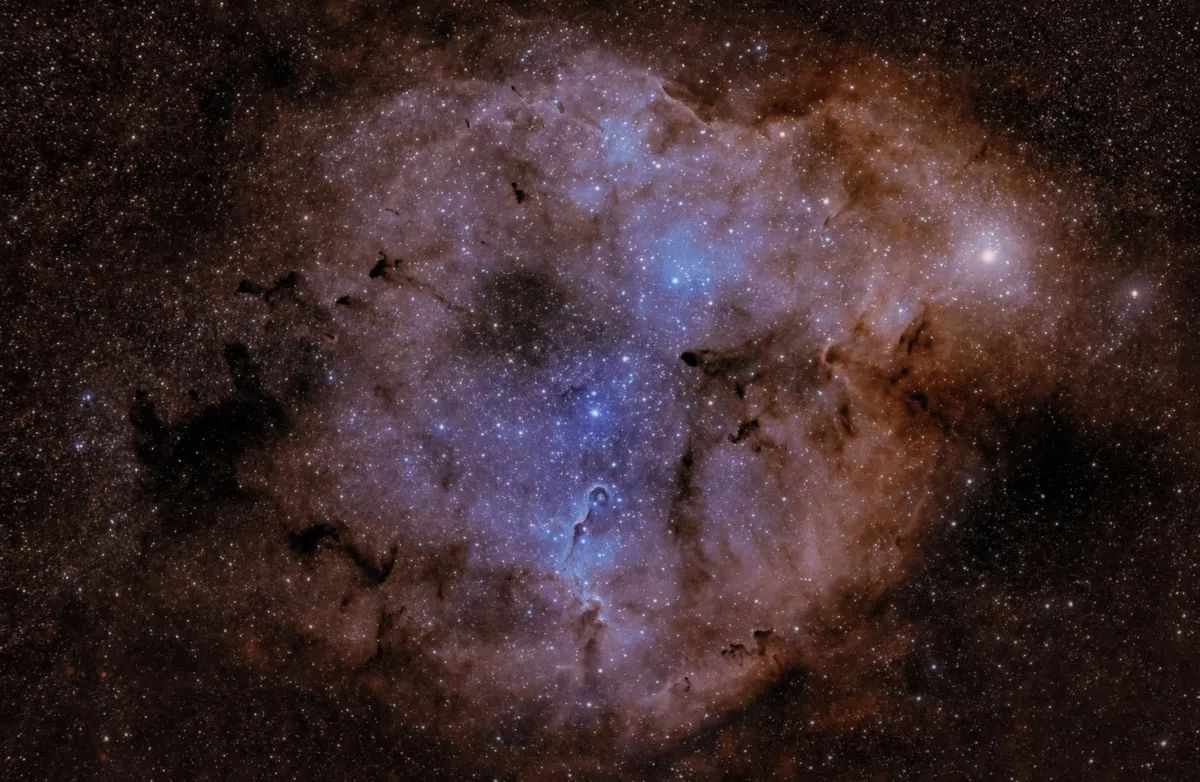
This difference between the visual appearance of celestial phenomena and astrophotography, even when using fairly large aperture telescopes, is probably one of the biggest learning experiences for anyone starting out.
So, what does a star look like through a telescope? What does a planet look like through a telescope?
Here we'll explore a selection of night-sky sights to give newcomers an idea of what to expect when you glimpse them for the first time.
None of this means visual observing is any less interesting; we hope, instead, that our descriptions here will help inspire a sense of reality to ensure those early observing memories are full of wonder.
Keep up to date with what's visible in the night sky by signing up to receive the BBC Sky at Night Magazine e-newsletter.
The Milky Way and stars
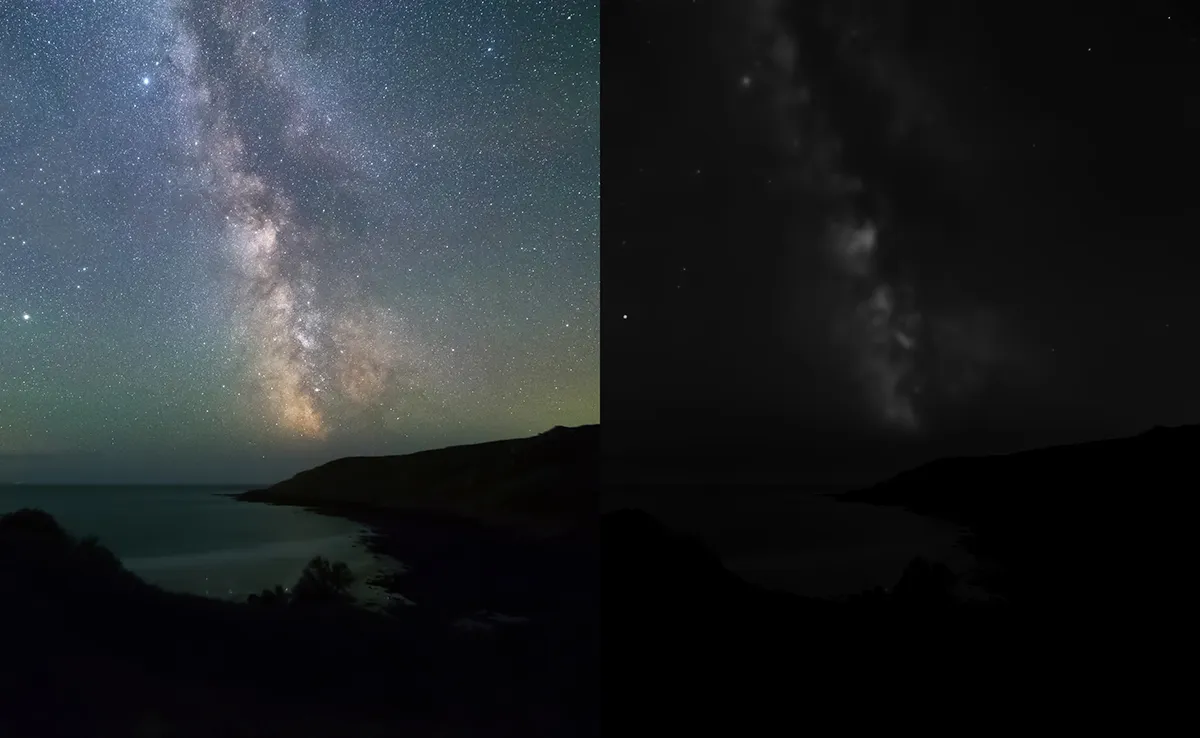
A view of the misty light of our Galaxy from a dark-sky site can be one of the most profound and awe-inspiring sights for any beginner to stargazing, especially in the UK summer months when part of the core of the Milky Way sits over the southern horizon.
But the Milky Way is one astronomical sight where there’s a stark difference between highly processed pictures and how it actually looks to the eye through a telescope.
Nightscape astrophotography containing the Milky Way often shows a billowing band of bright, almost dazzling, light stretching across the sky, sometimes accompanied by prominent flourishes of colour where glowing star-forming nebulae sit.
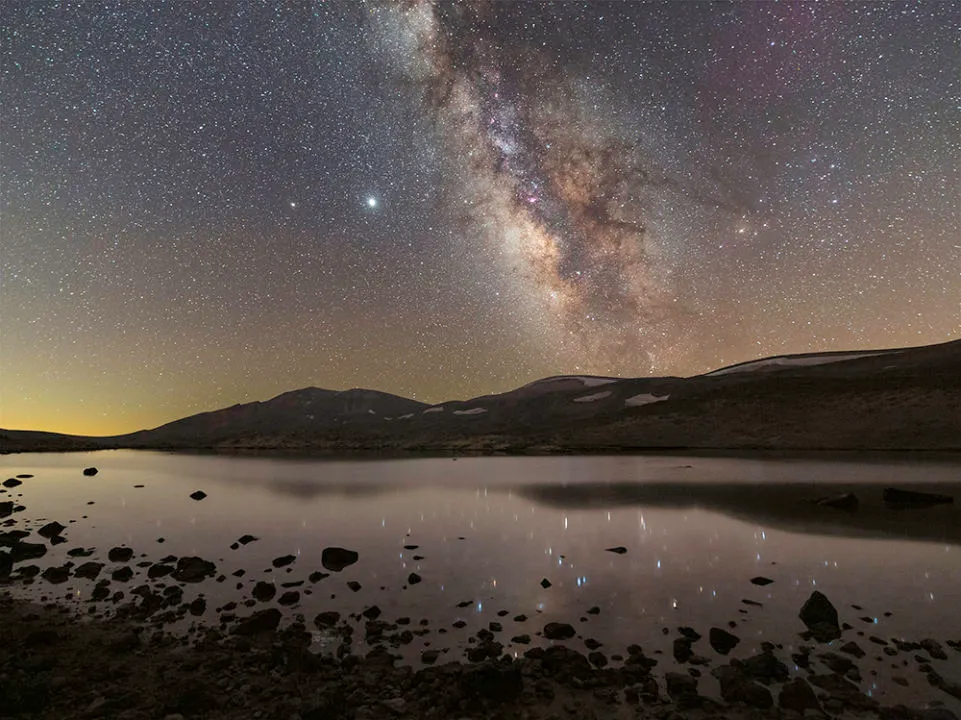
However, to the naked-eye under a suburban sky, even perceiving the soft light of our Galaxy can be challenging, since even a modest amount of background light pollution is enough to hide its faint glow.
On nights when the air is particularly clear, when the atmospheric ‘transparency’ is excellent, it’s certainly possible to see the brighter patches of Milky Way star fields – such as those that sit in Cygnus or Scutum – from suburban areas.
Under these conditions the Galaxy’s star fields tend to appear as diffuse swathes of light sitting within the overall suburban skyglow, and they’re subtle enough that they can sometimes be confused with patches of thin cloud.
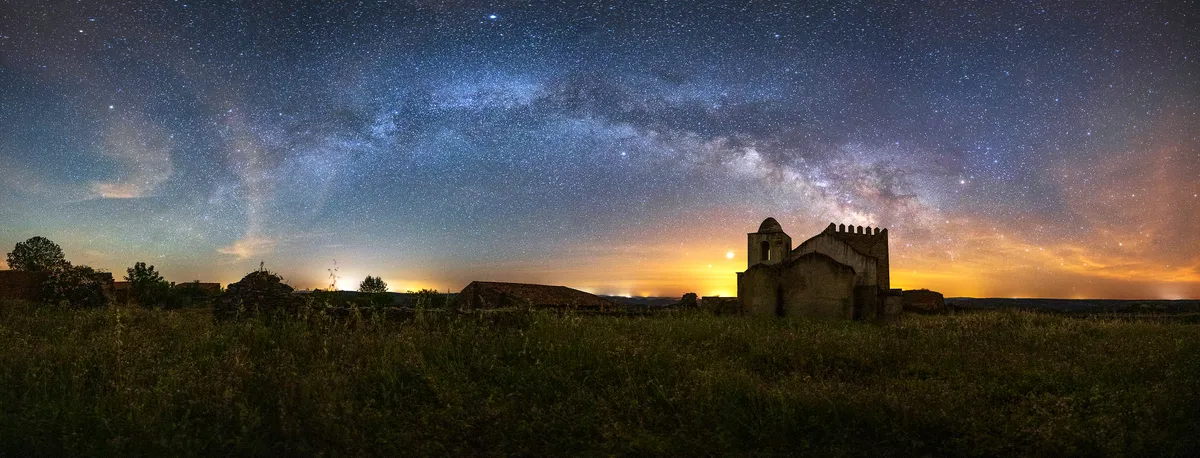
To get a sense of the Milky Way as an obvious band of light across the sky requires somewhat darker locations.
Under the inkiest-black skies the band of the Galaxy still appears as a greyish glow, but the soft forms of its numerous star fields appear far more structured and the many dark dust lanes weaving through them are clear to see.
Still, don’t expect to see the grainy mass of light, rich in colour and contrast typically seen in photos.
Read our guide on how to see the Milky Way.
The Moon
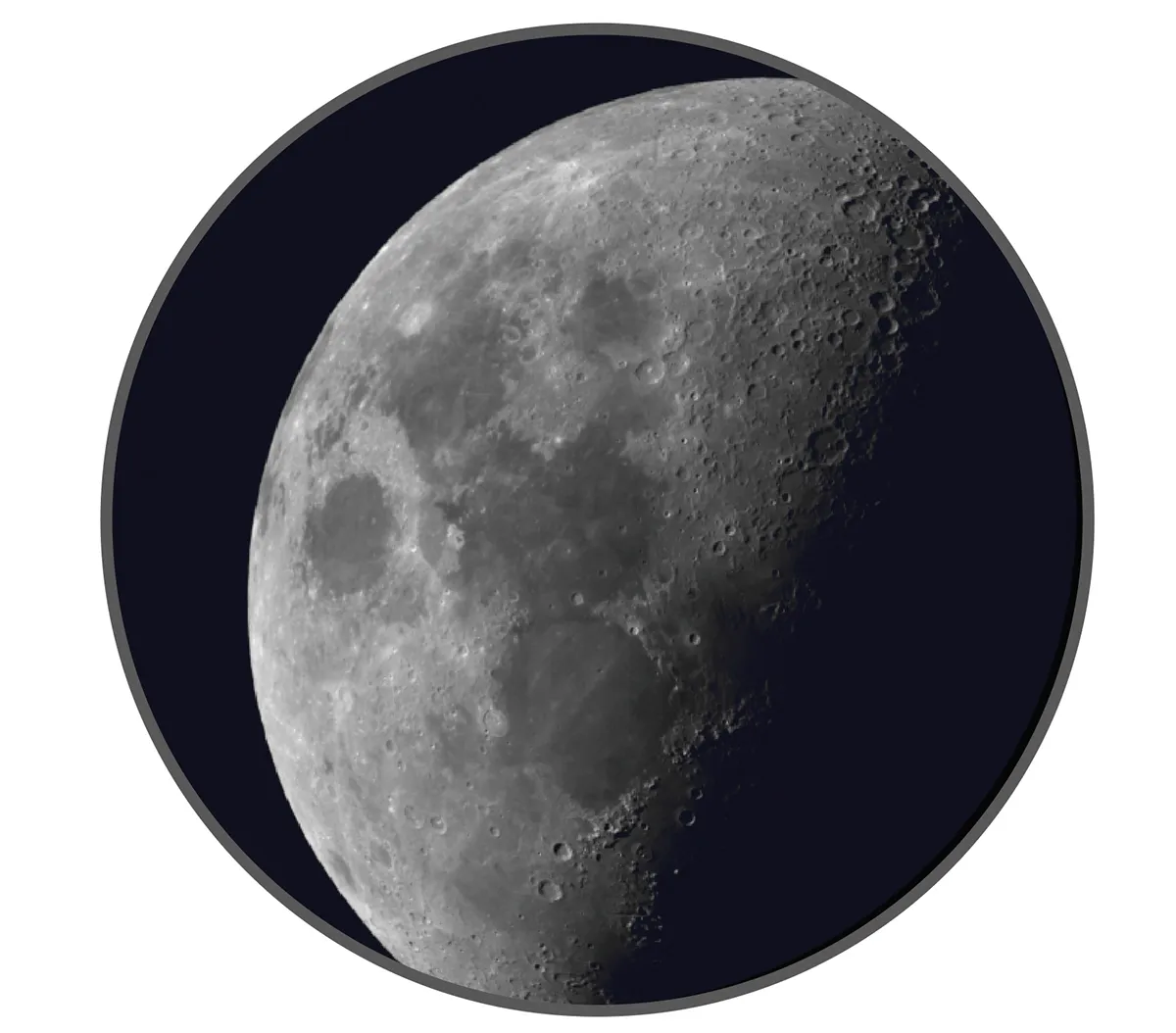
The Moon doesn’t really suffer too much from a visual observing ‘expectation gap’ like faint deep-sky objects do. It’s impressive even when seen through basic telescopes.
But if astro images are your main reference points for what its surface features look like through a scope, do bear in mind that these usually show a level of fine detail that won’t be visible to the eye.
Amateur imagery of the Moon is often captured using high frame-rate cameras.
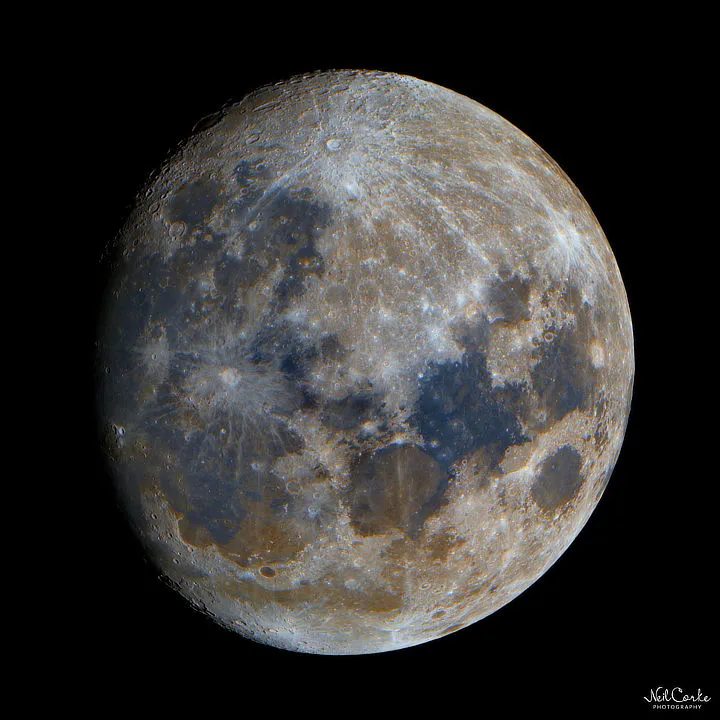
These are used specifically to overcome one of the things that pretty much defines the lunar visual observing experience: the undulating of the atmosphere.
The cameras capture thousands of frames, which are analysed so that the sharpest data can be extracted.
Our eyes don’t have this luxury, of course, so at the eyepiece you’ll see the Moon’s surface gently wobbling as its light is distorted – only in very brief moments will finer details become visible.
Not only that, but camera data is typically heavily processed on top of this.
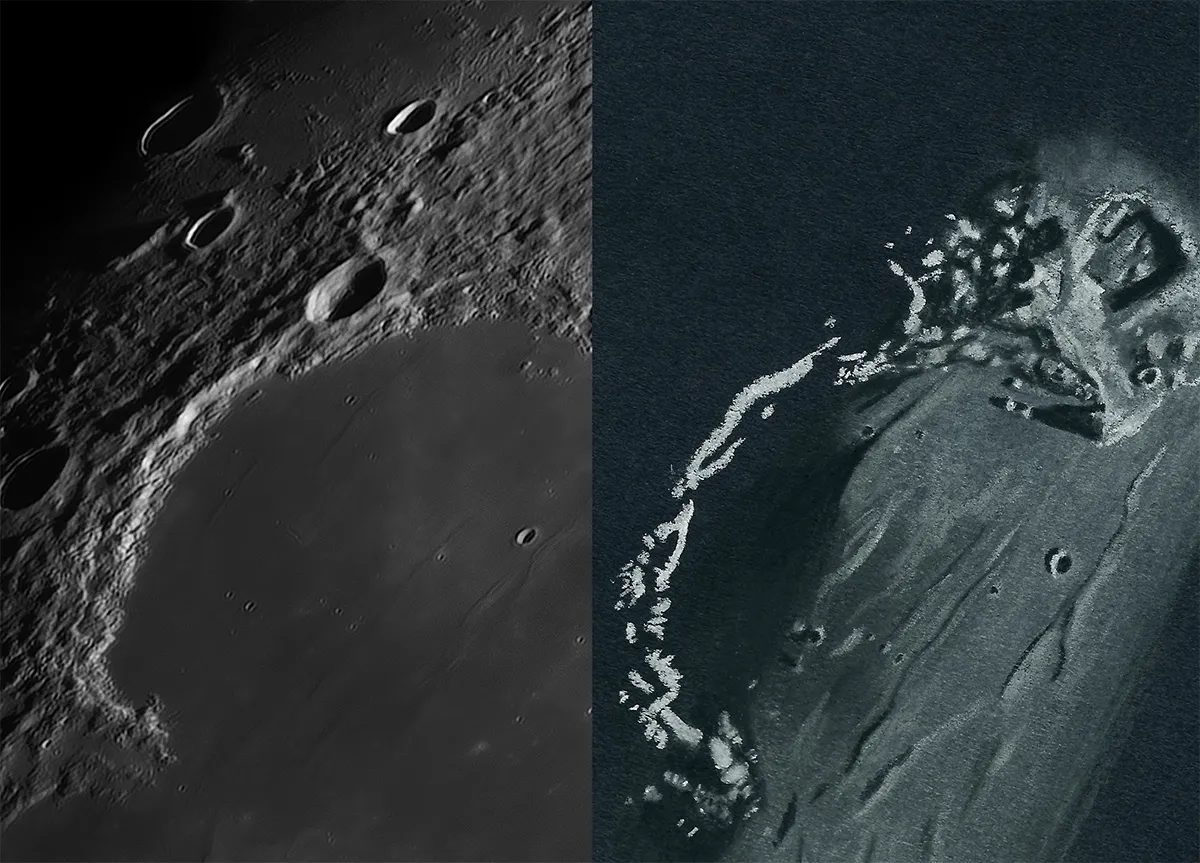
This means that at the eyepiece, the views of craters and mountains and the like are often softer and more subtle than sharpened photos might suggest they would be.
Through a small telescope at low magnification you’ll usually be able to see the whole, or at least much of, the lunar disc in the eyepiece.
As you up the magnification you’ll be able to get a ‘closer-in’ view of features like craters, mountains and rilles.
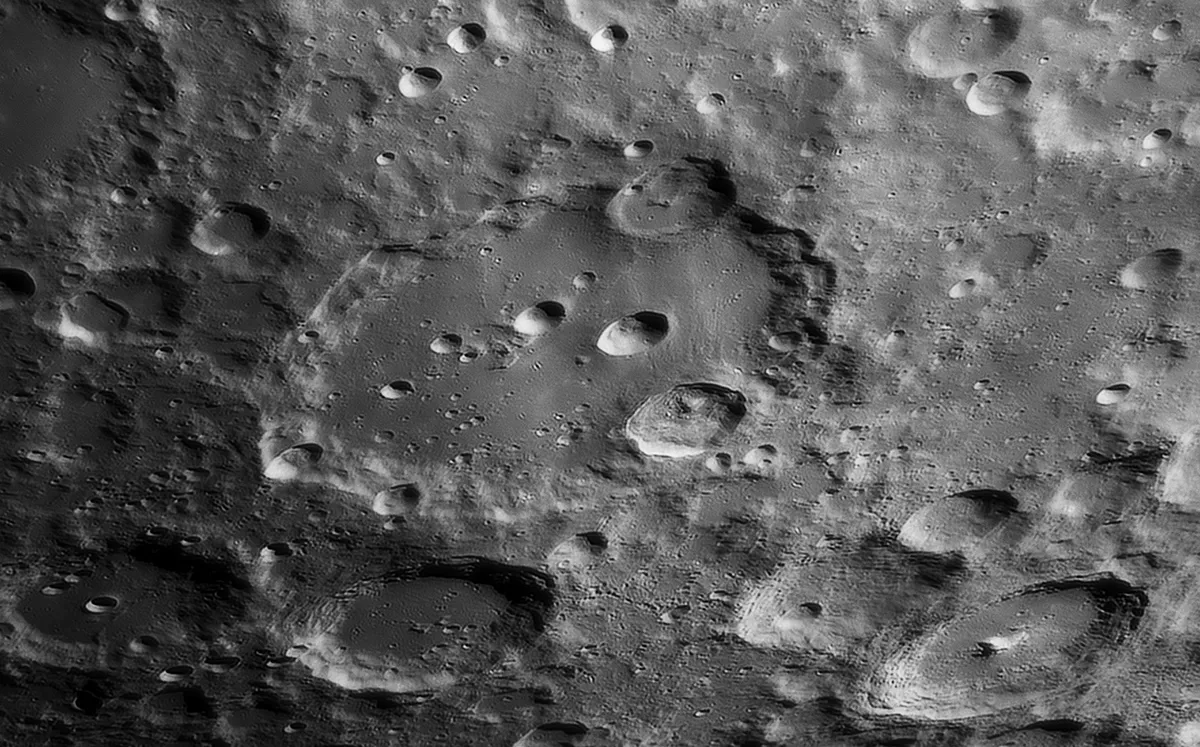
But be warned that doing this isn’t like zooming in on a phone screen, where the image largely retains the brightness and clarity of the wide view.
Increasing a telescope’s magnification will make the overall view fainter, and if seeing conditions are poor you may not actually see that much more detail, as it’ll be overwhelmed by the blurring of the turbulent atmosphere.
For help with getting to know our lunar companion, read our guide on how to observe the Moon.
Planets
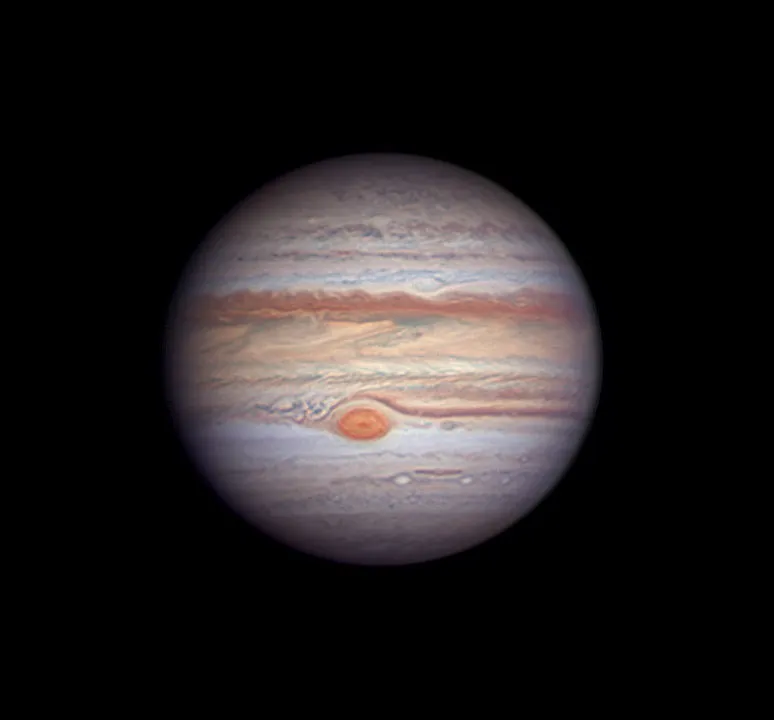
Your first sighting of a bright planet – Mars, Jupiter, Saturn, even Venus when it’s in a dark, night-time sky – in a telescope eyepiece can be a very special thing.
But, as with observing the Moon, prepare for a dynamic visual experience that will require patience and careful observation to make the most of the moments of good seeing.
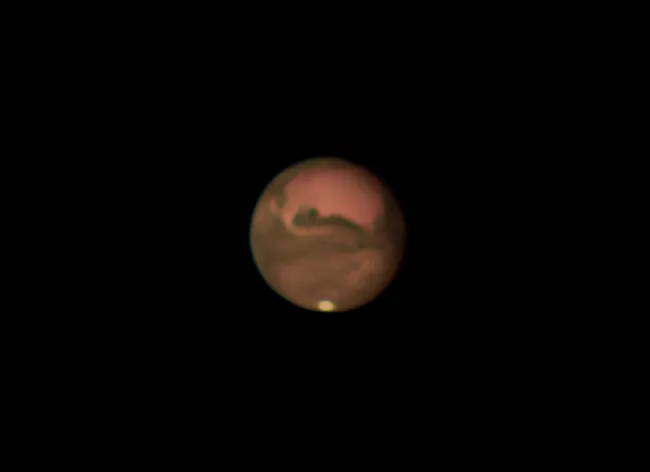
Though all four of the above mentioned worlds are captivating through a telescope of around, say, 150mm in aperture, their angular diameters – that is the size they appear to be through the telescope’s optics – will be fairly small.
And, again, just like when observing the Moon, using a very high-power eyepiece won’t necessarily give you a better view of the details on the planets.
A medium level magnification is usually a better bet in most cases, rather than the shortest focal length eyepiece you have in your kit box.
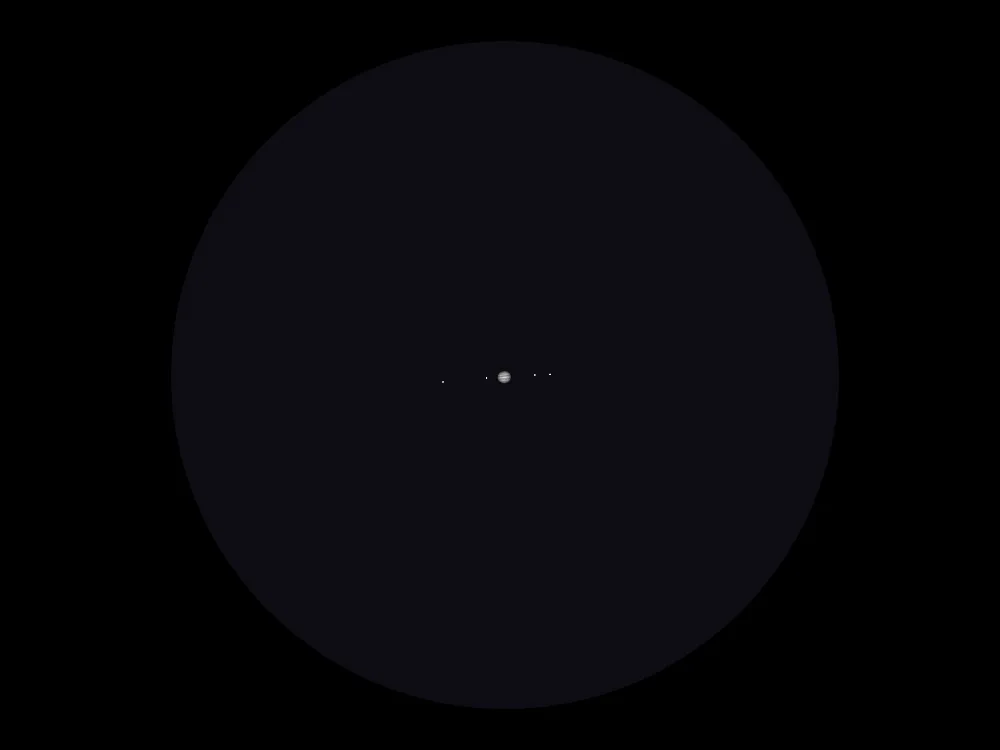
Trained on Jupiter, a telescope with a 150mm aperture will show the main equatorial bands and indications of some of the subtler atmospheric details, as well as the Great Red Spot.
A similar setup will show the rings of Saturn and potentially hints of the soft banding on the planet.
Good seeing will also reveal the larger structures in the rings, namely the Cassini Division, the dark band located between the A and B rings.
Meanwhile, Mars at opposition will be a small ochre disc, but careful observation will show the more prominent, dark, so-called ‘albedo’ features, such as the famous Syrtis Major – which appears as a vaguely triangular dark-brown patch near the middle of the Red Planet’s disc – and, possibly, one of the polar caps.
Read our guide on how to see the planets this year.
Star clusters
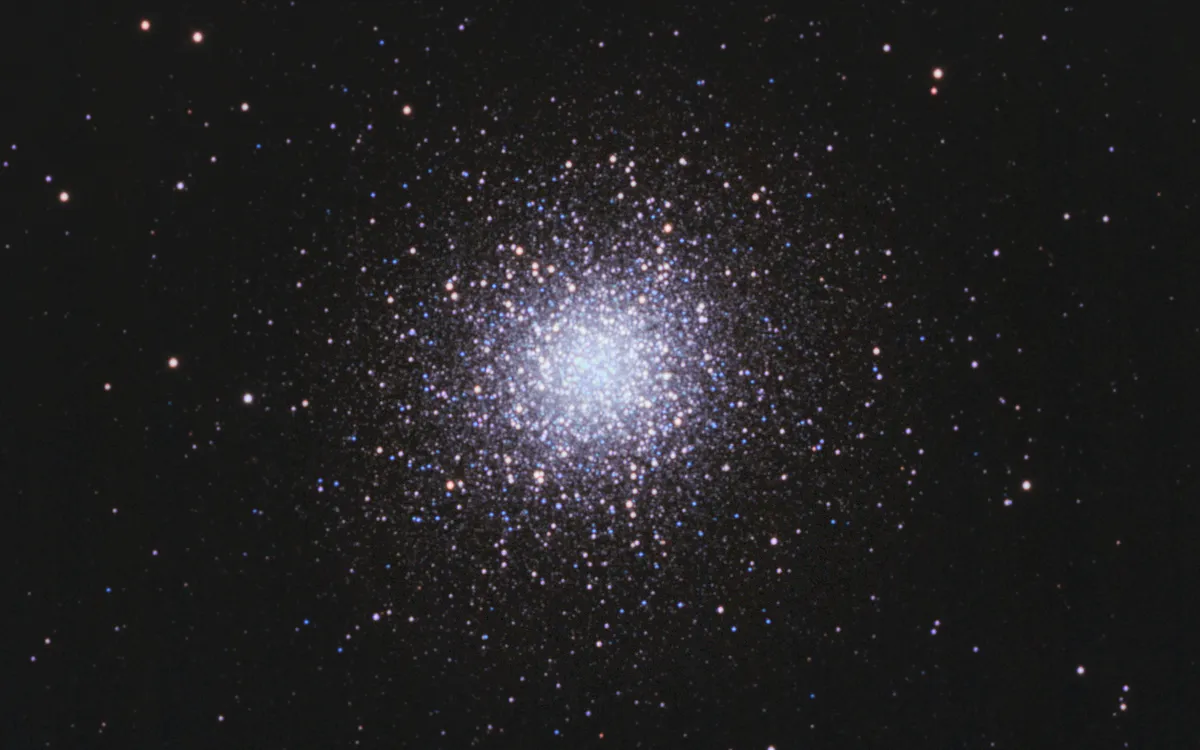
The myriad star clusters scattered across the night sky can provide hours of enjoyment at the eyepiece.
Dazzling open star clusters like the Pleiades can take your breath away through a small scope at a dark-sky site.
Even under suburban skies, the Pleiades appear as a mass of brilliant blueish-white points of light in a low power eyepiece – that’s one providing a low level of magnification.
One thing to remember when observing open clusters or selecting ones to view is that their individual members are affected by light pollution.
If you have particularly bad skyglow where you are, any faint members will be hidden and this will reduce the cluster’s overall impact.
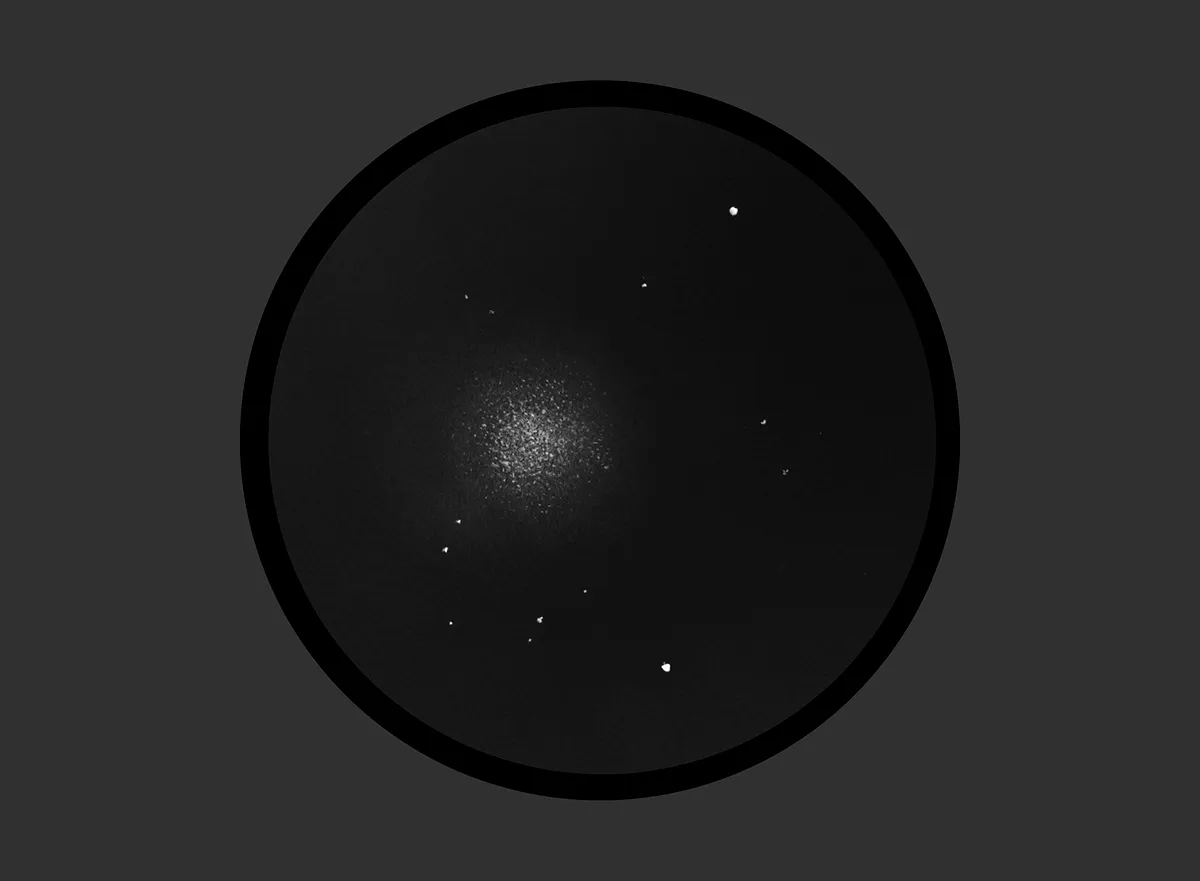
In addition to open star clusters, the night skies also contain what are known as globular clusters.
These are densely-packed spheroidal groups of stars that orbit around the disc of our galaxy.
The fainter ones can sometimes be hard to spot with a small scope and many just look like a fuzzy patch of grey light.
In medium- to large-aperture instruments, however, you begin to see that the patch is in fact a granular mass of countless stars.
The bright ones can be utterly enthralling to take in through a big scope.
Good ‘starter’ globulars that are well worth hunting down with a small scope at this time of year include the magnificent M13 cluster - the Hercules Globular Cluster - as well as M92 and M5.
Discover our top star clusters to see with the naked eye.
Galaxies
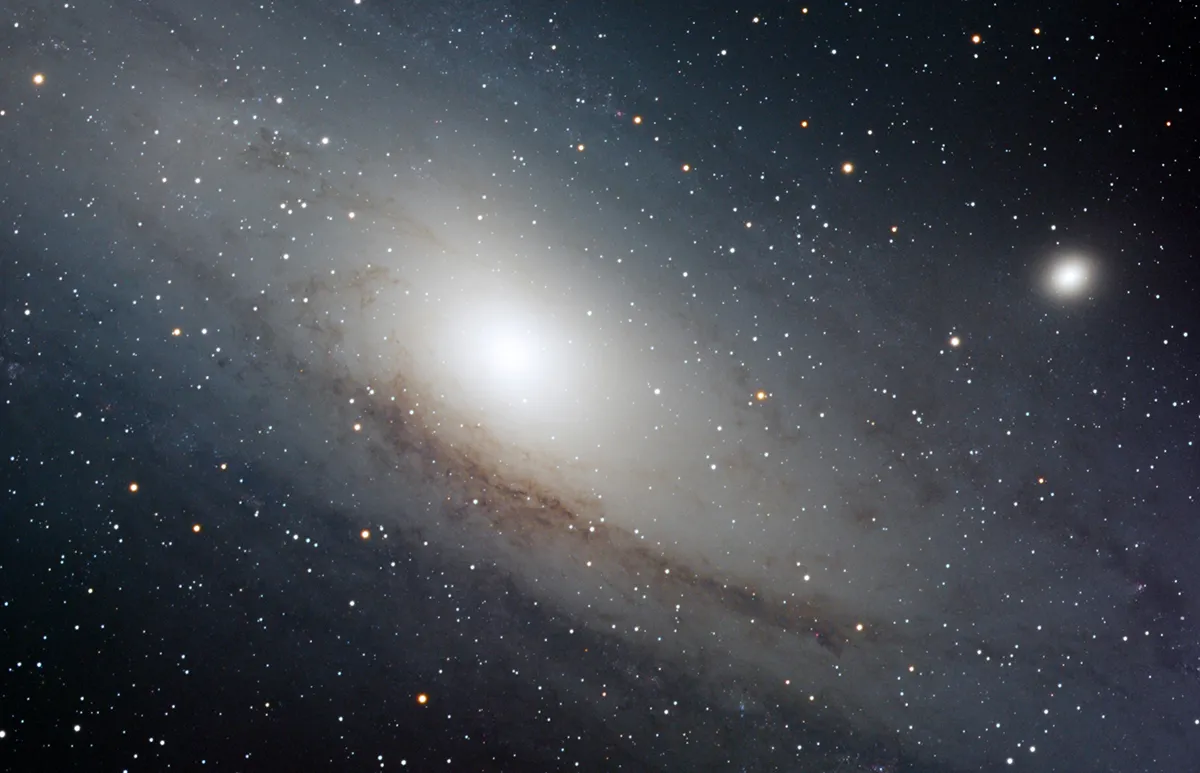
Perhaps the most challenging of all celestial objects for a beginner to observe with a small telescope are galaxies.
Though you won’t find any shortage of them listed in observing atlases and apps, do be prepared for the fact that most of these vast, stellar gatherings will look like faint smudges or spots of grey light in a small telescope.
They are a far cry from the glittering swirls one might envisage based on the images taken by the Hubble Space Telescope.
That being said, there are some brighter galaxies that show interesting details at the eyepiece of a small scope.

The iconic Andromeda Galaxy, M31, looks like a diffuse ellipse of light crossed by dark dust lanes, and you’ll also be able to spot its two main satellite galaxies M110 and M32.
In Ursa Major the pairing of Bode's Galaxy and the Cigar Galaxy, with their contrasting oval and narrow ellipse shapes, are fun to hunt down.
And if your scope is on the larger side, the face-on spiral of M51 - the Whirlpool Galaxy - in Canes Venatici, can be an interesting object to locate from a site with dark skies.
Read our guide on how to see the Andromeda Galaxy.
Nebulae
Emission nebulae

The image of the Orion Nebula, M42, shown here is fairly typical of how this spectacular object – a glowing cloud of gas with an embedded, nascent, star cluster – and others like it are revealed in long-exposure astrophotography.
The vast swathes of hydrogen that make up the bright so-called ‘emission’ nebula shine with vibrant shades of pink and red, while the darker regions harbour subtle dust clouds with swirling filament-like forms.
Though these kinds of pictures of star-forming nebulae are ubiquitous in the world of imaging, they are nonetheless taken with cameras that are far more capable of detecting and collecting celestial light than our eyes, and so the visual impression of these objects in a small- to medium-aperture telescope is markedly different.
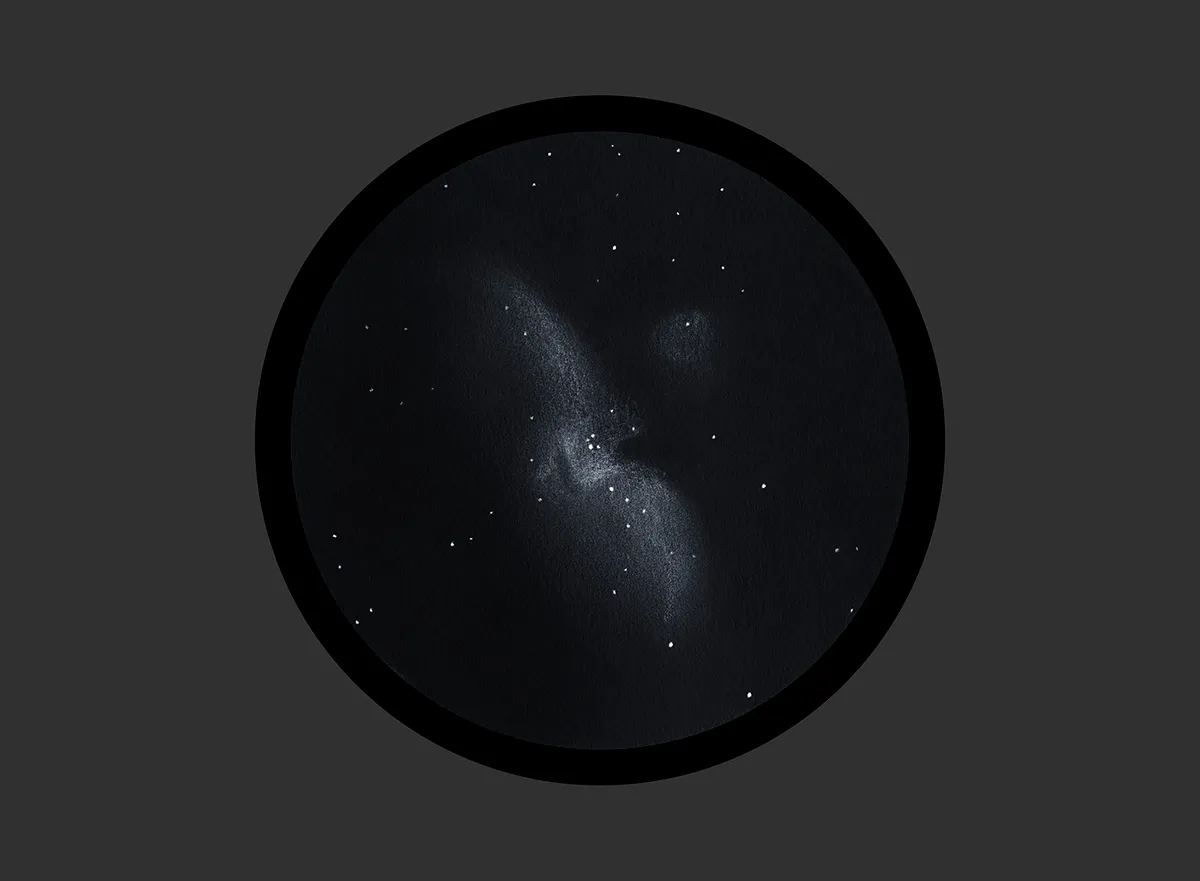
With some of the northern sky’s most famous bright nebulae, from a site with relatively dark skies like the Orion Nebula and the Lagoon Nebula, you will be able to detect the soft glow of the nebulae around their embedded star clusters.
In the case of M42 it’s possible to see some of the brighter structures surrounding the Trapezium Cluster in a small telescope (see the eyepiece sketch above), but there will be no dazzling colours.
Brightness and detail-wise, things improve if you use a larger aperture instrument and, perhaps, a light-pollution suppression or contrast-enhancing filter.
In the largest instruments – think huge Dobsonian light buckets – M42 and the Lagoon Nebula can reveal breathtaking structure, and you’ll start to see more details in some of the fainter emission nebulae too.
But, again, the reds and pinks of astrophotos will not be there. At most, in our experience, you might detect a slight hint of a mint-green hue.
Planetary Nebulae
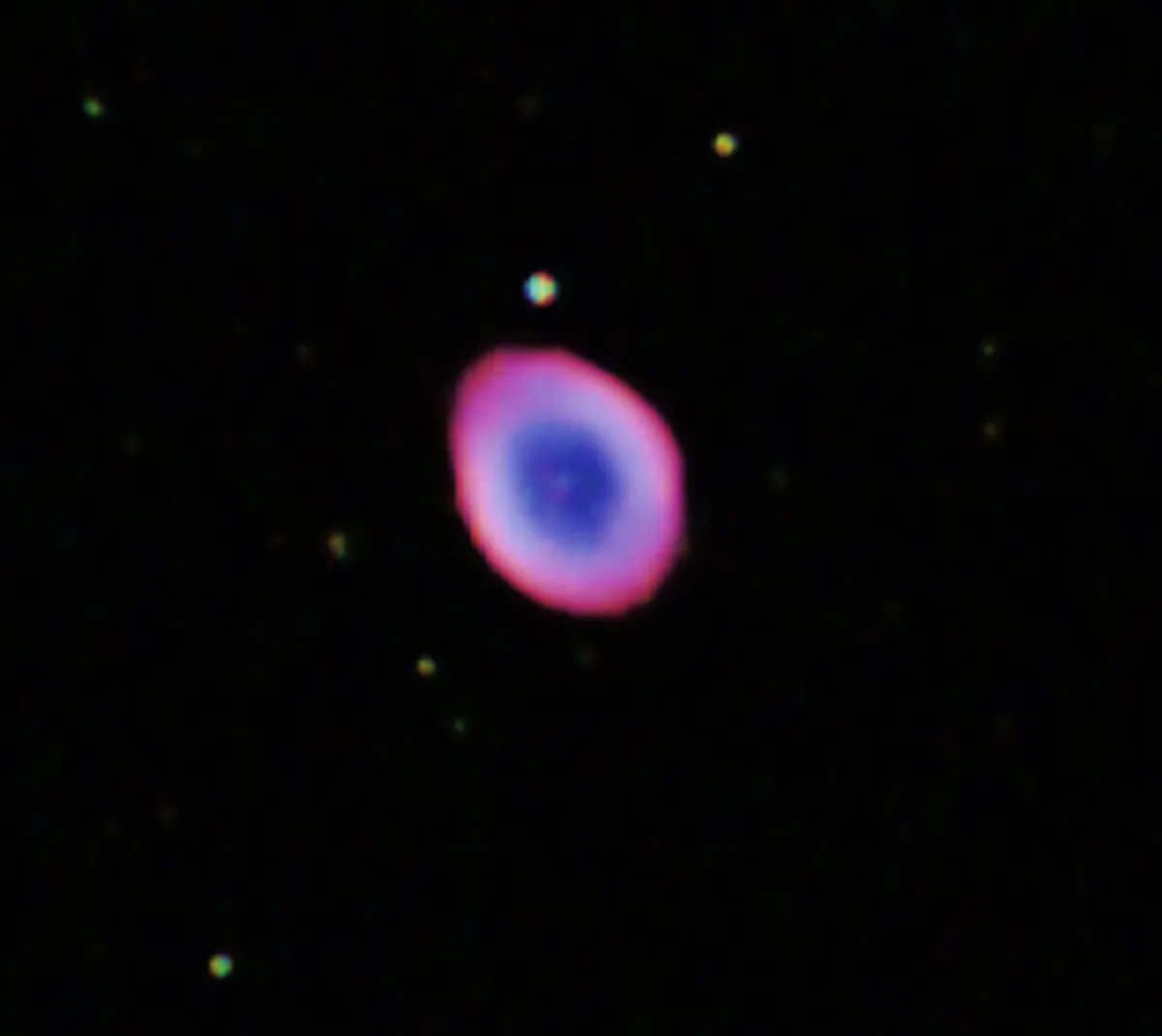
The gaseous, glowing skeletons cast into space by Sun-like stars, known as ‘planetary nebulae’, can be hugely rewarding to track down if you’re just starting to explore the deep-sky.
In long-exposure images from professional observatories and advanced amateur astrophotographers these nebulae look like riotous splashes of colour against the black of space, but at the eyepiece they have an altogether more ghostly appearance.

You can glimpse famous examples like The Dumbbell Nebula, M27, and The Ring Nebula, M57, through a pair of binoculars, with the former looking like a faint smudge of light and the latter like a diffuse, grey spot against the background stars.
A small telescope will show the ring structure of M57 more clearly as well as the vague shape of M27, which is often likened to that of an apple core.

With a large aperture telescope, M57 takes on a striking ‘smoke ring’ appearance that jumps out from the background, while M27 starts to show clear textures within its monochromatic form.
This guide originally appeared in the February 2022 issue of BBC Sky at Night Magazine.
